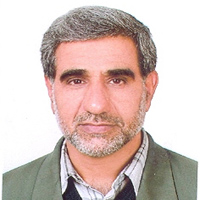Quantitative soil quality assessment in different land uses at some Parts of south eastern of Qazvin
Author(s):
Abstract:
Assessment of soil quality is one of the most useful tools for evaluation the soil management condition and different land uses. Quantity indices of soil quality are most suitable methods for determination and comparison of soils quality. In this study soil quality indices and selection methods of effective soil properties were compared for evaluating the soil quality in different land uses. Seventeen soil physical, chemical and biological properties were selected as total data set (TDS) at five different land uses including orchard, rangeland, irrigated farming, dry land farming and unutilized lands, in slope classes of 0-2, 5-7, and 9-11 %, at some parts of south eastern of Qazvin (Iran). Then, 7 properties selected as minimum data set (MDS) using Principle Component Analysis (PCA). Soil quality was evaluated by integrated quality index (IQI) and nemero quality index (NQI) in two set of soil properties including MDS and TDS. The results showed that orchard and rangeland had the highest IQI and NQI in both data sets, respectively, however irrigated farming, dry land farming and unutilized lands have the least IQI and NQI in both data sets, respectively and have significant different compared to orchard and rangeland. Correlation coefficient between TDS and MDS was 0.95 and 0.88 for IQI and NQI, respectively, indicating the reliability of the MDS instead of TDS, and showed that the IQI offers better results for evaluating the soil quality in this case study.
Keywords:
Language:
Persian
Published:
Iranian Journal of Soil and Water Research, Volume:47 Issue: 4, 2017
Pages:
775 to 784
https://magiran.com/p1633994
سامانه نویسندگان
مقالات دیگری از این نویسنده (گان)
-
Evaluation of soil organic matter dynamics under crop residue management using carbon-13 isotope
M. Mirzaei, M. Gorji Anari, E. Moghiseh *, H. Asadi
Journal of Nuclear Science and Tehnology, -
Challenges and Limitations of Soil and Land Resources in Iran
Hossin Asadi, Manoochehr Gorji
Journal of Land Management,



